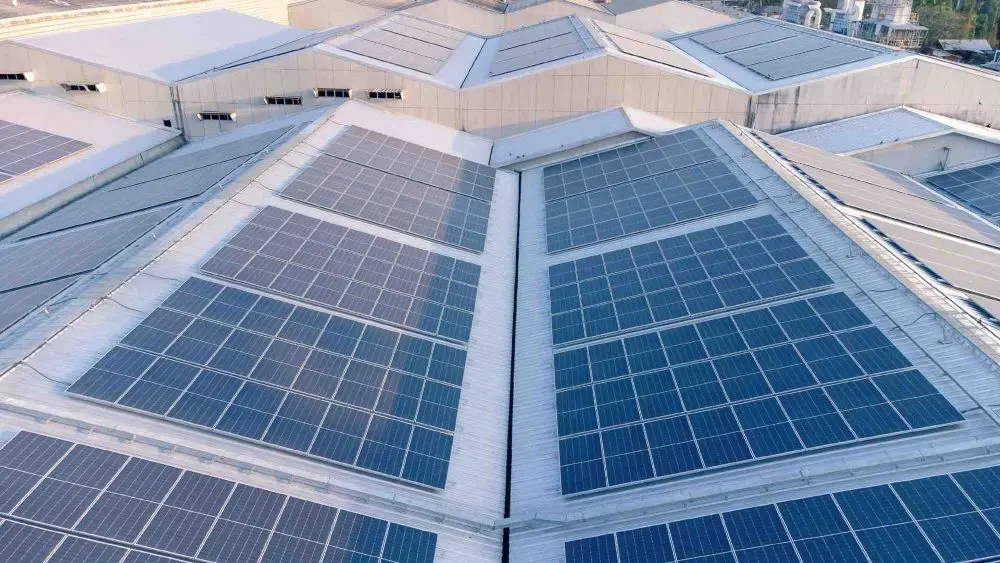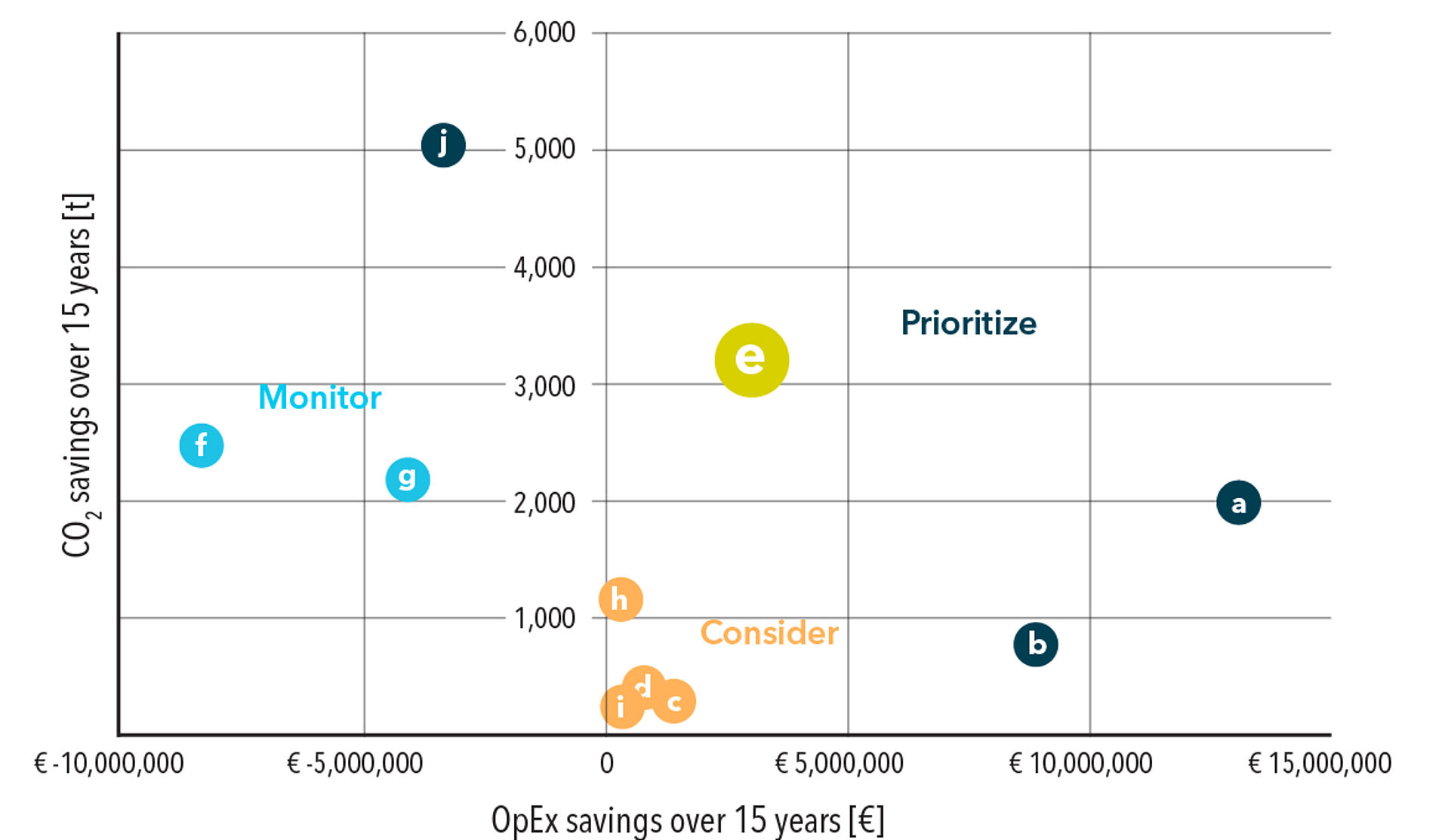- Insights & events
- 4flow studies

4flow study
Solar Panels
Adopting solar panels in the reference warehouse leads to:
At a glance
Green energy from renewable sources can lead to significant emission reductions. As an alternative to sourcing green electricity externally, businesses can generate it on-site. Solar panels reduce the demand for electricity from the grid. If the emissions during the lifecycle of the panels are less than those of grid electricity, this measure can thus reduce emissions. As an additional benefit, cost savings are likely.
Particularly in Scandinavia, where existing electricity generation is predominantly green, and solar radiation is relatively low, investment in solar panels on warehouse roofs requires a case-by-case analysis, while in countries like the Czech Republic, Germany or Poland, it is a viable measure.
The case in context
The cost of a standard rooftop system has dropped to less than 10% of the price in 1990. This significant cost reduction, coupled with the increased efficiency of solar cells, makes investments in photovoltaic systems highly appealing for the industrial sector.1
A closer look: case details and parameters
In our case analysis, the aim is to fulfill 60% of the warehouse's annual electricity demand with a rooftop solar panel system. The remaining electricity requirements during peak demand periods during the day and throughout the year are met by conventional electricity sources. Notably, both the amounts of electricity generated and the investment costs for solar panels vary across countries. The annual energy production of the solar panels ranges from 900 kilowatt hours per kilowatt peak (kWh/kWp*) in Ireland to over 1,600 kWh/kWp in Spain, for example. The investment costs vary, as well, ranging from €645/kWp in Greece to €1,284/kWp in Finland.
It is important to note that the solar panels in our case study have a depreciation period of 20 years. For simplicity, any variations within countries have been overlooked, and average values are taken into consideration.
Results
Our study indicates that the CO₂ abatement costs associated with PV systems vary according to the country of installation. While the integration of PV systems consistently results in OpEx savings, the potential for CO₂ emissions reduction varies due to the distinct electricity mix in different countries. Interestingly, though Portugal and Spain include higher amounts of renewable energy in their conventional electricity mix than other European countries, they still see low CO₂ abatement costs. This discrepancy is attributed to greater energy generation per panel in this region. The map above displays abatement costs over 1 year for several countries, emphasizing the trade-off between expenses and emissions reduction.
Generally, introducing solar panels is only an emission-saving measure if the current electricity mix has a higher carbon emission factor than solar energy. Importantly, the expected future energy generation plays a major role, as the solar panels last for more than a decade. That means a sound transition plan towards green energy generation has an impact on the case. In the context of solar panel installation on rooftops, it is essential to account for regional differences in solar energy generation. Moreover, the installation costs of solar panels exhibit a decreasing trend with the size of the system. Therefore, opting for a larger system could potentially result in even higher OpEx savings.
Evaluation: carbon reduction and OpEx savings vary by region
Investing in solar panels stands out as a major lever for CO₂ reduction in this case study. While the impact on OpEx savings is moderate compared to other options, the significant upfront investment requires due analysis. Despite the initial financial commitment, we recommend this approach for its substantial benefits in CO₂ reduction and potential long-term OpEx savings in Central and Eastern Europe.
* Kilowatt peak (kWp): a measure for the maximum output of a PV system, in kilowatts
Key results
3,333 tons total CO₂ savings over 15 years - 30% of total warehouse CO₂ emissions €3 million total cost savings over 15 years


